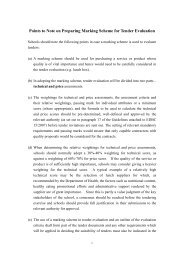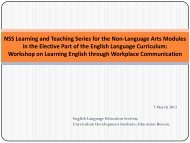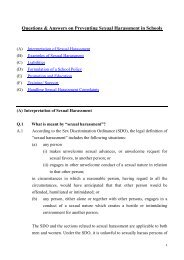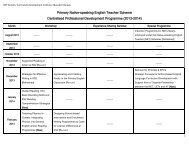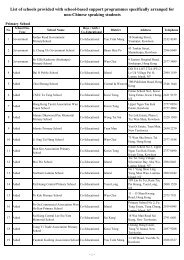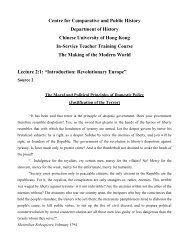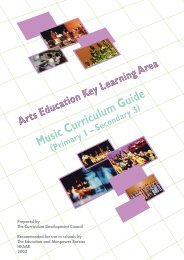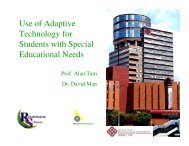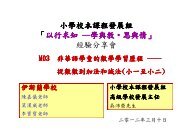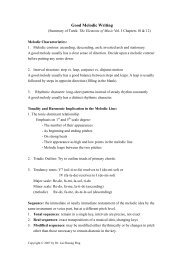S2 Topic 10 Sense Organs and the Domino Game
S2 Topic 10 Sense Organs and the Domino Game
S2 Topic 10 Sense Organs and the Domino Game
You also want an ePaper? Increase the reach of your titles
YUMPU automatically turns print PDFs into web optimized ePapers that Google loves.
ain.<br />
• name <strong>the</strong> four primary tastes <strong>and</strong> state <strong>the</strong> part of <strong>the</strong> tongue that is<br />
more sensitive to a particular type of tastes, e.g.,<br />
- Part A of <strong>the</strong> tongue is more sensitive to dessert.<br />
- Part B is more sensitive to salted fish.<br />
- Part C is more sensitive to lemon juice.<br />
- Part D is more sensitive to bitter melon juice.<br />
Activity:<br />
<strong>Game</strong> – group activity<br />
Materials:<br />
<strong>Domino</strong> cards – 31 cards for each set distributed; visualizer for<br />
demonstration<br />
Steps:<br />
1. Review with students <strong>the</strong> worksheets, Main Parts of <strong>the</strong> Eye <strong>and</strong> Their Functions, Main<br />
Parts of <strong>the</strong> Ear <strong>and</strong> Their Functions, <strong>and</strong> Four Primary Tastes.<br />
2. Explain to <strong>the</strong> class that <strong>the</strong>y are going to play dominoes in groups of three or four (if<br />
<strong>the</strong> group has more than four people, some of <strong>the</strong>m can play in duos). Toge<strong>the</strong>r with<br />
three students, use a visualizer to demonstrate how to play <strong>the</strong> game. The instructions<br />
below may be explained to <strong>the</strong> students in Cantonese.<br />
a. Have one student in <strong>the</strong> group deal <strong>the</strong> <strong>Domino</strong> cards. Each student should be given<br />
five cards <strong>and</strong> <strong>the</strong> remaining cards should be face-down in <strong>the</strong> stack. Tell students<br />
not to show <strong>the</strong>ir cards to each o<strong>the</strong>r.<br />
b. To start <strong>the</strong> game, one student picks a card from <strong>the</strong> stack <strong>and</strong> <strong>the</strong>n puts it face-up<br />
on a desk/bench.<br />
c. Students <strong>the</strong>n take turns to place one card next to <strong>the</strong> ones on <strong>the</strong> desk/bench, on<br />
ei<strong>the</strong>r end of <strong>the</strong> array <strong>and</strong> face-up. When placing a new card, each student should<br />
put <strong>the</strong> name or a written description of a particular part of <strong>the</strong> eye, <strong>the</strong> ear or <strong>the</strong><br />
tongue next to <strong>the</strong> related pictures or vice versa. At <strong>the</strong> same time, <strong>the</strong> student<br />
should produce a sentence that combines <strong>the</strong> two pieces of information. For<br />
example, in <strong>the</strong> following combinations of domino cards, <strong>the</strong> student needs to say:<br />
<strong>S2</strong> <strong>Topic</strong> <strong>10</strong>: <strong>Sense</strong> <strong>Organs</strong> <strong>and</strong> <strong>the</strong> <strong>Domino</strong> <strong>Game</strong> 12




